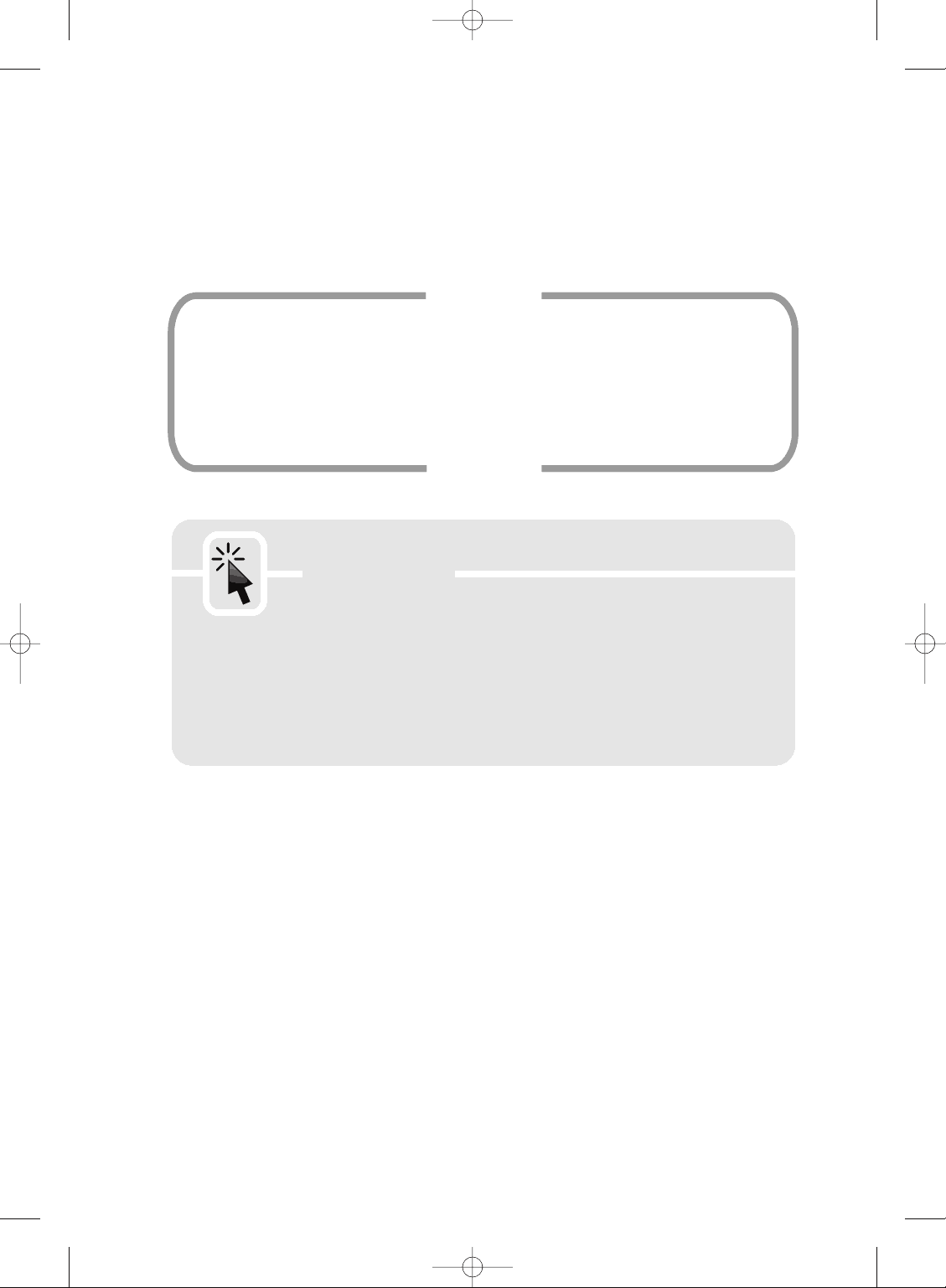
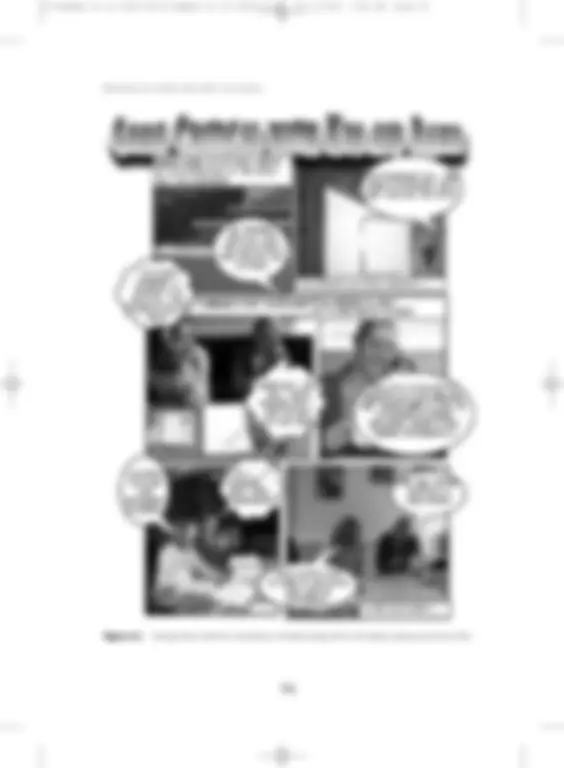
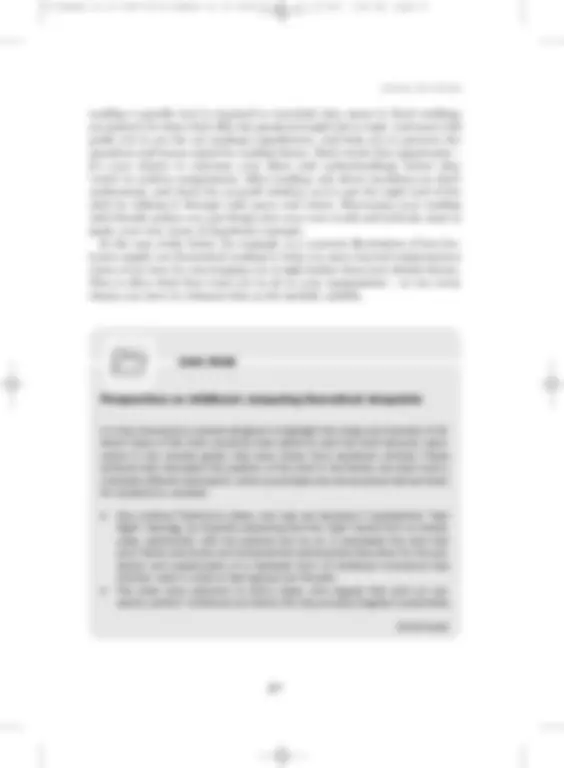
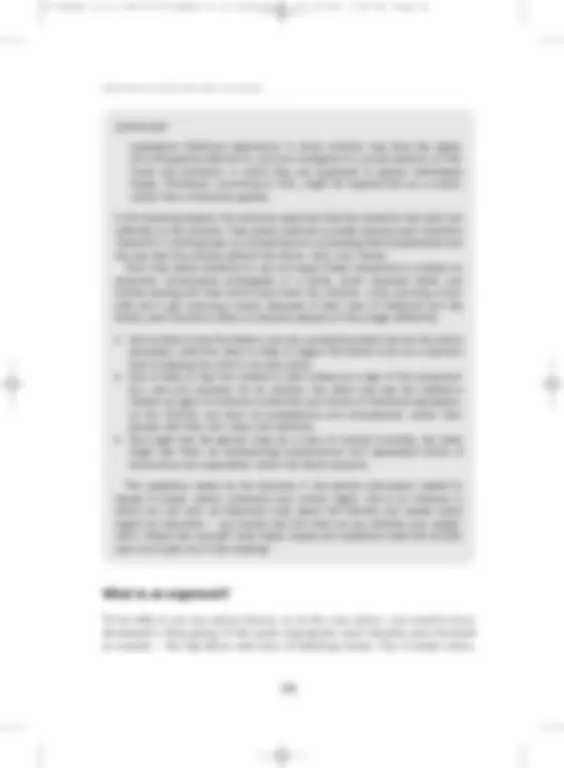
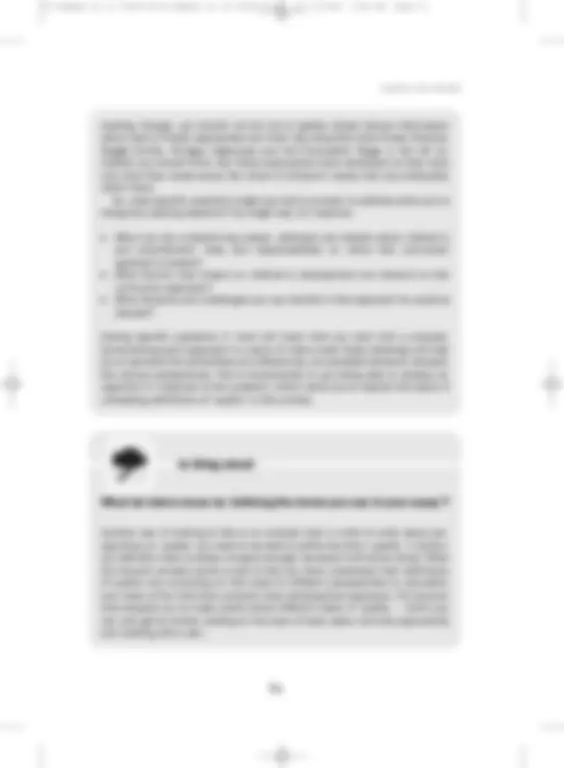
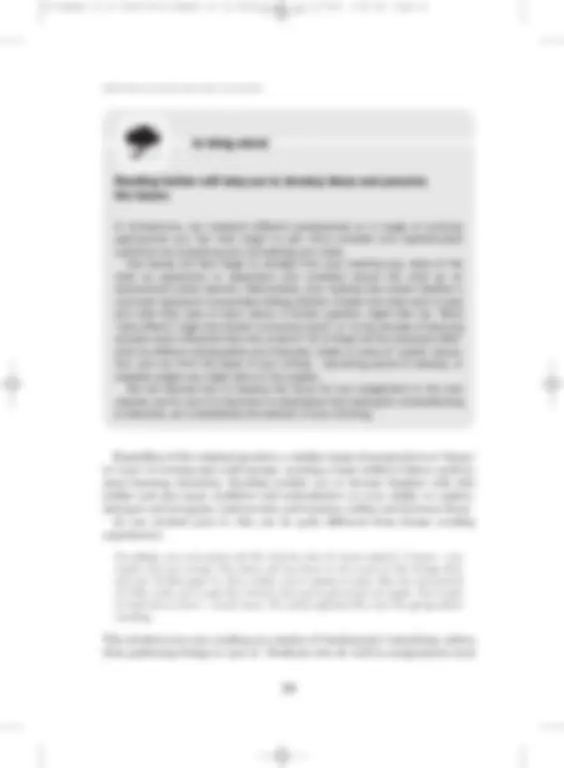
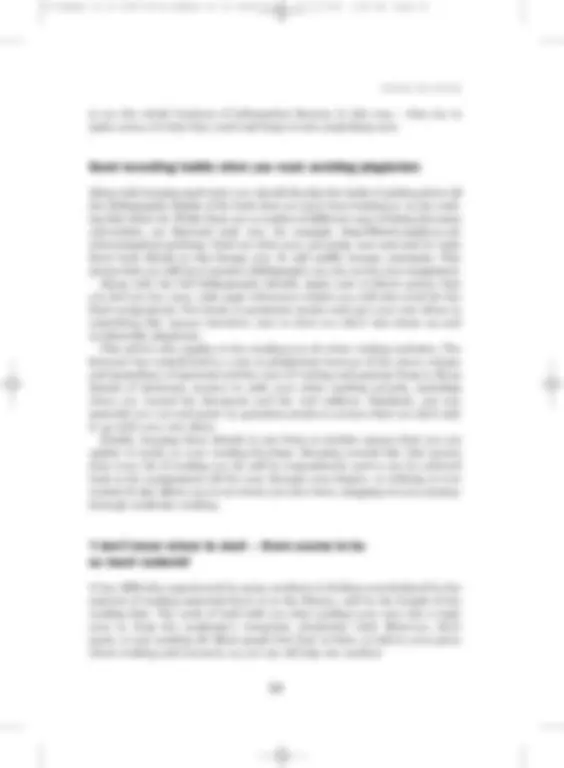
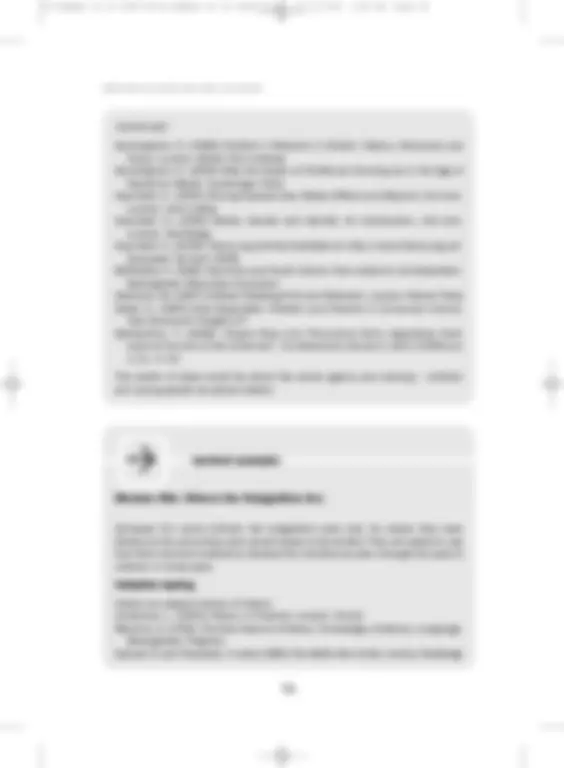
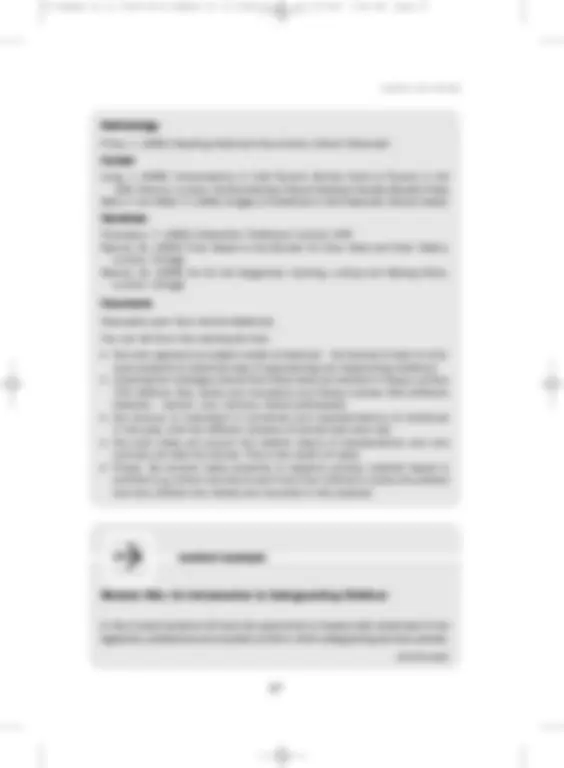
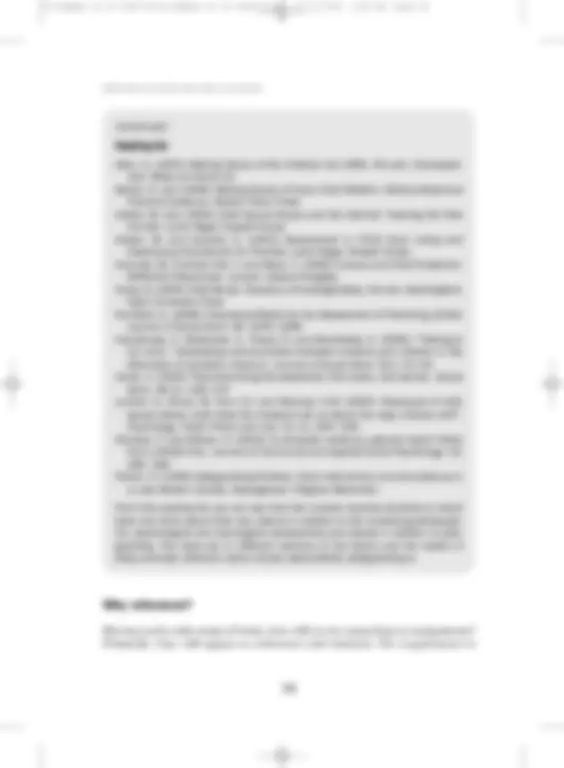
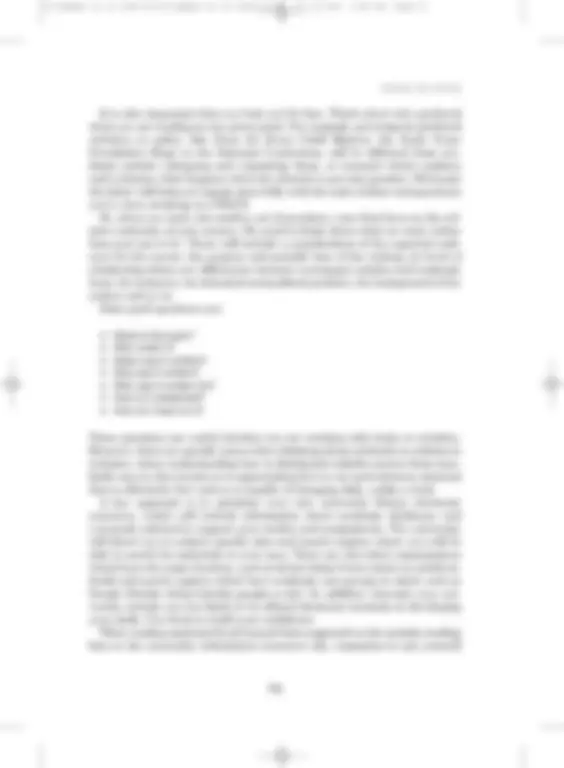
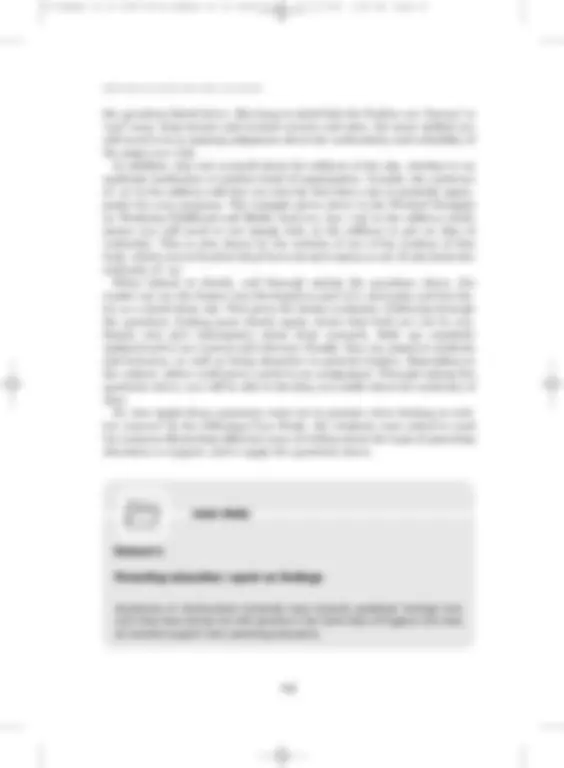
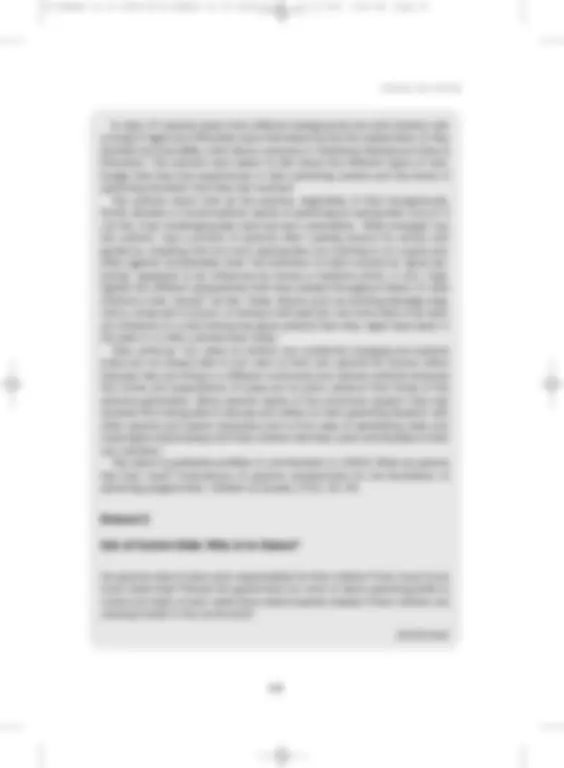
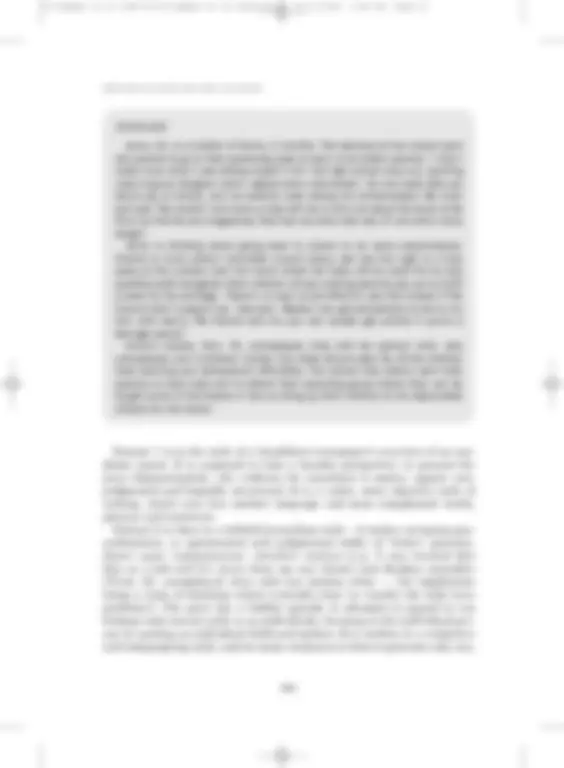
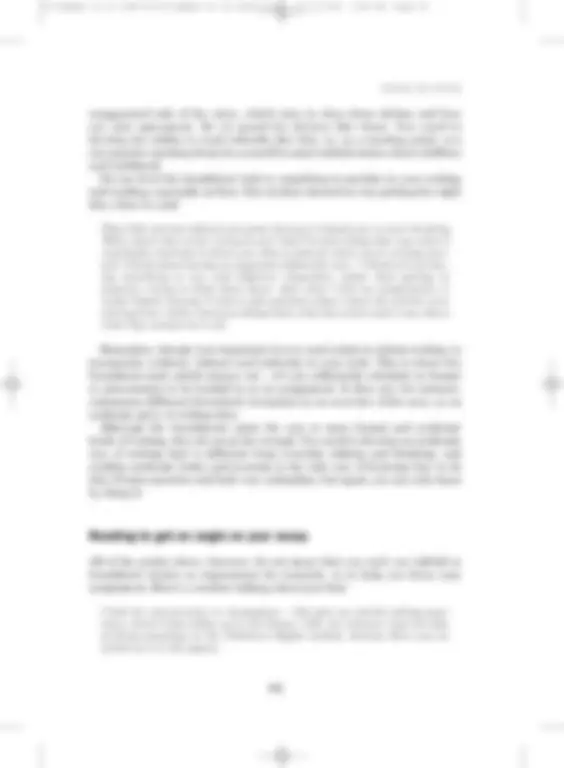
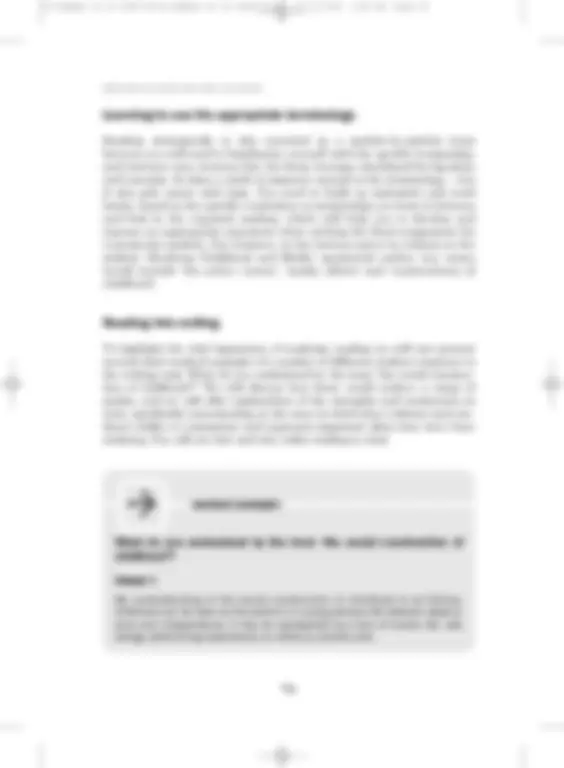
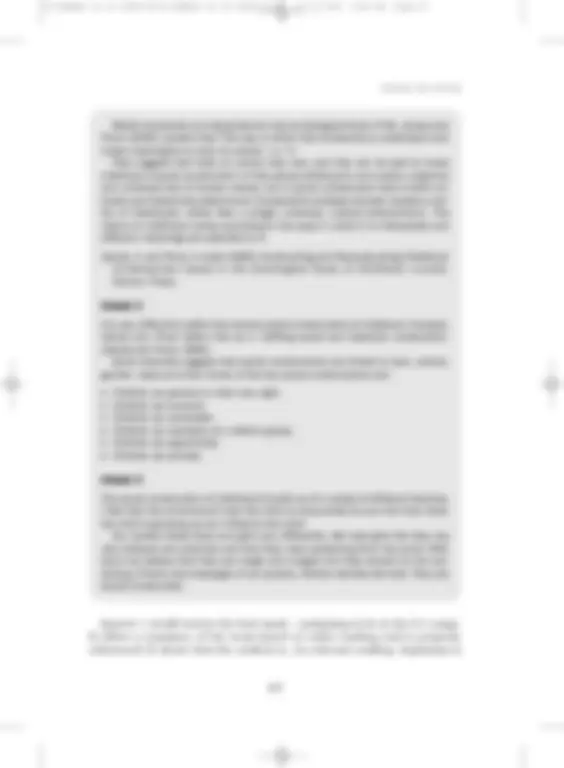
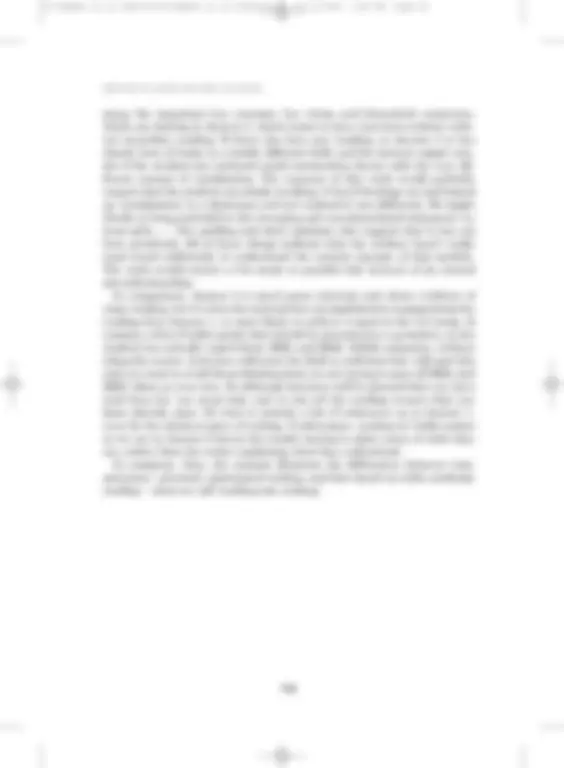


Study with the several resources on Docsity

Earn points by helping other students or get them with a premium plan


Prepare for your exams
Study with the several resources on Docsity

Earn points to download
Earn points by helping other students or get them with a premium plan
Community
Ask the community for help and clear up your study doubts
Discover the best universities in your country according to Docsity users
Free resources
Download our free guides on studying techniques, anxiety management strategies, and thesis advice from Docsity tutors
This document emphasizes the importance of academic reading in CS/ECS degrees, particularly in understanding the social construction of childhood. It highlights how reading lists and academic articles introduce students to diverse perspectives and theoretical frameworks, enabling them to compare, contrast, and make points about different views of childhood. The document also provides examples of modules and their associated reading lists, showcasing the historical, narrative, and safeguarding approaches.
Typology: Lecture notes
1 / 25

This page cannot be seen from the preview
Don't miss anything!


















Getting to grips with why reading matters so much on
CS/ECS degrees
Chapter 1 highlighted that CS/ECS courses explore how views and opinions about children and childhood are not fixed, but vary according to lots of dif- ferent factors. However, to do well on your CS/ECS course you need to be able to think and write academically, not just recognize that everyone sees child- hood in different ways. This will involve taking hold not just of the language of academic discourse, but also the range and diversity of ideas, concepts, ide- ologies and standpoints that exist around childhood. This crucially rests upon a student’s reading. Reading is a hugely important activity on any degree course. Once you understand why it is important and can pinpoint what you are trying to
achieve by ‘reading round’ a topic, you will be in a position to develop your own approach to the research that needs to be done in order to write a suc- cessful assignment. This chapter offers practical examples of effective read- ing strategies used by students on their CS/ECS courses and relates them directly to the act of student writing. Above all, by the end of this chapter we hope you’ll see that reading and writing are ongoing and integrated aspects of learning, rather than something you do only at the end of a module when you have to physically produce the assignment.
Learning how to see the significance of the reading
that tutors set for you
We said in Chapter 1 that you need to tune in to each tutor’s perspective by considering the debates, key questions and issues they highlight in taught sessions. You can also learn a huge amount about how they view the topic from the reading that they ask you to do. It’s vital that you engage with this, as it’s another crucial aspect of getting to know your tutor and being sure that your work eventually meets their expectations. Reading lists and the chapters, articles or books set for particular teaching sessions introduce you to and immerse you in academic debates about the sorts of ideas and issues that the lecturer wants you to grasp. They show you a range of theoretical frameworks or approaches or beliefs, any of which can be used as lenses through which to view different aspects of childhood. In short, they act as a ‘toolkit of ideas’ which enable you to perceive different perspectives; com- pare, contrast and consider the implications of different viewpoints on child- hood; and make points yourself when writing about a topic. Tutors will expect you to use these terms and concepts when you prepare your assignment. Let’s think about how and why you should invest a lot of time in reading. In Figure 2.1 you can see how, during their first year, two of our students remember moving from passive to active approaches to learning. To tell you their story they used Comic Life software as a reflective tool (see http:// www.plasq.com). You will notice that reading, and talking about different things they had read, played a vital role in their ability to become critical.
Doing the reading in preparation for seminars
and teaching sessions
When lecturers set reading that they want you to do before a session, they typically do so to help you make sense of the literature you need to know about before you can come to understand their topic area. If they say that
READING INTO WRITING
reading a specific text is required or essential, they mean it. Such readings are going to be those that offer the greatest insight into a topic. Lecturers will guide you to see the set reading’s significance, and help you to perceive the questions and issues raised by reading theory. Don’t waste this opportunity – it’s your chance to rehearse your ideas and understandings before they ‘count’ in written assignments. After reading, ask about anything you don’t understand, and check for yourself whether you’ve got the right end of the stick by talking it through with peers and tutors. Discussing your reading with friends makes you put things into your own words and actively start to make your own sense of important concepts. In the case study below, for example, is a concrete illustration of how lec- turers might use theoretical reading to help you move beyond commonsense views of an issue by encouraging you to use (rather than just obtain) theory. This is often what they want you to do in your assignments – so use every chance you have to rehearse this as the module unfolds.
In a key introductory module designed to highlight the range and diversity of dif- ferent views of the child, students were asked to read two brief extracts, repro- duced in the module guide, that were drawn from academic articles. These extracts both discussed the position of the child in the family, but each took a markedly different standpoint, which is precisely why the lecturers had set them for students to consider.
READING INTO WRITING
(Continued)
STUDYING CHILDHOOD AND EARLY CHILDHOOD
oppressive childhood experience, in which children may have few rights, are infrequently listened to, and are consigned to a social position of infe- riority and limitation, in which they are supposed to appear relentlessly happy. Childhood, according to Holt, might be experienced as a prison, rather than a Romantic garden.
In the teaching session the lecturers assumed that the students had read and reflected on the extracts. They asked students to briefly discuss each theorist’s viewpoint in small groups, by comparing and contrasting their perspectives and the way that the articles defined the terms ‘child’ and ‘family’. Then they asked students to use and apply these viewpoints to analyse an extremely conservative photograph of a family, which depicted father and mother posing with their arms round their two children, a boy (carrying a foot- ball) and a girl (carrying a book). Because of their view of childhood and the family, each theorist is likely to interpret aspects of this image differently.
The questions raised by the lecturers in the plenary discussion related to issues of power, choice, autonomy and control. Again, this is an instance in which you can pick up important cues about the themes and issues tutors regard as important – you should tap into them as you develop your assign- ment. Always ask yourself: what ideas, issues and questions does the lecturer want me to get out of this reading?
What is an argument?
To be able to use any given theory, as in the case above, you need to have developed a firm grasp of the main arguments each theorist puts forward or asserts – the big ideas and ways of defining terms. Try to make notes,
(Continued)
arguments – the main ideas – comparing and contrasting them with other things you have read, reading between the lines and highlighting just a few juicy illustrative quotes which you might use to bring your assignment to life. This will also help you to avoid plagiarizing by accident (there is more on this in the next chapter). Make effective notes by asking questions about the material you’re going through when reading, by trying to group and categorize perspectives on a topic, rather than just copying chunks out. Scan a chapter or article to get the gist of its perspective, then try and put it in your own words, in a highly selec- tive way, rather than writing reams. Boil it down so you can summarize the main ideas on an index card. Ask yourself ‘what are the main ideas?’ ‘What does this author believe?’ ‘How does this fit in (or not) with another author’s argument?’ Summarizing or précising your reading like this is the key to pro- ducing a good assignment. For instance, children’s reading of comics and magazines is sometimes a focus in articles and books on literacy. When reading these articles or books, one of the key questions you might ask yourself is whether the writers see comic and magazine reading as a good or bad thing. Further, asking why they think that and whether there are any clues to that in what you read, should help you to establish that there are a number of perspectives here that can be grouped, ranging from seeing comics as a way of fostering literacy through to undermining it. If you write down what you find out in response to the questions, doing something with the information, you’re going to have valuable notes that you can use to write your assignment. You’re also going to have a set of reminders to yourself about what you don’t really understand, which will help you make the most of teaching sessions and tutors. This is what your lecturers want you to do. Let’s look at a concrete example of what we mean by this.
Imagine you have been asked, for your assignment, to consider the issues sur- rounding the question: ‘What counts as “quality curricula” in early years edu- cation?’ You would set out to research (read about) different early years approaches – building on what the teaching sessions covered. In doing your
STUDYING CHILDHOOD AND EARLY CHILDHOOD
reading, though, you should not set out to gather simply factual information about each of these approaches and then say (describe) what Forest Schools, Reggio Emilia, Portage, Highscope and the Foundation Stage in the UK do. Instead you should think why these approaches have developed as they have and what they reveal about the views of children’s needs that are embedded within them. So, what specific questions might you look to answer or address when you’re doing this reading research? You might ask, for instance:
Having specific questions in mind will mean that you read with a purpose. Summarizing each approach in a bank of notes under these headings will help you to perceive the similarities and differences, and possible tensions, between the various perspectives. This is fundamental to you being able to develop an argument in response to the question, which wants you to explore the issue of competing definitions of ‘quality’ in this context.
Another way of looking at this is to consider that in order to write about per- spectives on ‘quality’ you need to be able to define the term ‘quality’. A diction- ary definition here is simply not good enough, because it will be too broad. What the lecturer actually wants to see is that you have understood that definitions of quality vary according (in this case) to different perspectives on education and views of the child that underpin each philosophical approach. The lecturer here expects you to make points about different views of ‘quality’ – which you can only get by further reading on the topic of early years curricula approaches and reading with a pen.
READING INTO WRITING
to see the whole business of information literacy in this way – they try to make sense of what they read and forge it into something new.
Good recording habits when you read: avoiding plagiarism
Along with keeping good notes you should develop the habit of putting down all the bibliographic details of the book that you have been looking at, as the read- ing lists below do. While there are a number of different ways of doing this most universities use Harvard style (see, for example, http://libweb.anglia.ac.uk/ referencing/harvard.htm). Find out what your university uses and start to write down book details in this format now. It will swiftly become automatic. This means that you will have created a bibliography you can use for your assignment. Along with the full bibliographic details, make note of direct quotes that you feel are key ones, with page references (which you will also need for the final assignment). Put them in quotation marks and put your own ideas in something like square brackets, just so that you don’t mix them up and accidentally plagiarize. This advice also applies to the reading you do when visiting websites. The Internet has contributed to a rise in plagiarism because of the sheer volume and immediacy of material and the ease of ‘cutting and pasting’ from it. Keep details of electronic sources in with your other reading records, including when you viewed the document and the web address. Similarly, put any material you ‘cut and paste’ in quotation marks to ensure that you don’t mix it up with your own ideas. Finally, keeping these details in one form or another means that you can update it easily as your reading develops. Keeping records like this means that every bit of reading you do will be remembered, and so can be referred back to for assignments all the way through your degree, so nothing is ever wasted. It also allows you to see where you have been, mapping out your journey through academic reading.
‘I don’t know where to start – there seems to be
so much material’
A key difficulty experienced by many students is feeling overwhelmed by the amount of reading material there is in the library, and by the length of the reading lists. The scale of both tells you that reading your way into a topic area is, from the academic’s viewpoint, absolutely vital. However, don’t panic, or put reading off. Most people feel ‘lost’ at first, so talk to your peers about reading and research, as you can all help one another.
READING INTO WRITING
Writing an essay at university is so different! They expect you to use the library, the journals. I’d definitely never done anything like that! At first I was lost, I’d no idea. I didn’t know what they expected of me.
Also, take heart – you will learn to read strategically, as well as widely, which will make the reading more manageable. Here, for example, are a cou- ple of experienced students talking about what they try to do when they set about reading:
Student A: I don’t read every word any more, but you’re trying to pick out key points. You try to figure out what they think. Student B: I look for someone with the same views as myself. And then I look for someone with a contrasting view.
They are talking about reading with a purpose – looking for different per- spectives, as we flag up above. Instead of reading to answer the question, they’re reading to quite consciously ‘open up more questions’.
I’m finding that it’s not straightforward sort of information, it’s more opening up areas of interest. For example, at college we took an area of child develop- ment, and we did it in the first module at university, but we did it from the view of people I’d never even heard of! Because at college we didn’t think about it like that. Here, I’m going to the library and looking at all these books – I’ve bought books hand over fist! Because as I’m reading I do a comparison, and I’ve been thinking ‘Well, they’re all on children’s development in school, but that one’s dead different to that one!’ So it sort of opens up. And then you read the references of one book and it just gets bigger and bigger. Because what I’m trying to do is keep more broad, in an attempt to understand how they com- pare, or how they oppose each other. And that’s changing what I already knew, so that it’s changing all the time. That’s what I’m trying to do.
This is a very useful thing to do when you’re reading – it means you’re setting out to try to group or categorize perspectives, as we mention above. You can do this by deliberately looking for people who are for and against something, and ask yourself ‘on what grounds do they base their views and assumptions?’ Once you’ve found different perspectives and definitions, you can then begin to focus down by analysing the possible reasons for their different outlooks. Don’t forget, too, to check your reading lists for ‘key’ or ‘core’ texts. Many lecturers will highlight these because they offer useful overviews of the debates that are held within their module. Whilst these books may not go into the sort of detail you will eventually be expected to explore, they give you a valuable introduction to the area, so they are the ones you should read first. Think of them as offering you a map of a country, rather than a town: the scale doesn’t let you see the detail – you will need to ‘zoom in’ on that later
STUDYING CHILDHOOD AND EARLY CHILDHOOD
Buckingham, D. (1999) Children’s Television in Britain: History, Discourse and Policy. London: British Film Institute Buckingham, D. (2000) After the Death of Childhood: Growing Up in the Age of Electronic Media. Cambridge: Polity Gauntlett, D. (2005) Moving Experiences: Media Effects and Beyond , 2nd edn. London: John Libbey Gauntlett, D. (2008) Media, Gender and Identity: An Introduction , 2nd edn. London: Routledge. Gauntlett, D. (2009) Theory.org [online] Available at: http://www.theory.org.uk/ [Accessed 16 April 2009] McRobbie, A. (1991) Feminism and Youth Culture: from Jackie to Just Seventeen. Basingstoke: Macmillan Education Robinson, M. (1997) Children Reading Print and Television. London: Falmer Press Seiter, E. (1995) Sold Separately: Children and Parents in Consumer Culture. New Brunswick Rutgers UP Walkerdine, V. (1999) ‘Violent Boys and Precocious Girls: regulating child- hood at the end of the millenium’. Contemporary Issues in Early Childhood , 1 (1), 3– The toolkit of ideas would be about the active agency and viewing – children and young people as sense-makers.
Synopsis: For some children the hobgoblins were real, for others they were fairies and for some they were social issues to be tackled. This unit seeks to use first hand archival material to develop the narrative as seen through the eyes of children in times past. IInnddiiccaattiivvee rreeaaddiinngg History as subject/nature of history Jordanova, L. (2000) History in Practice. London: Arnold Marwick, A. (2001) The New Nature of History: Knowledge, Evidence, Language. Basingstoke: Palgrave Samuel, R. and Thompson, P. (eds) (1990) The Myths We Live By. London: Routledge
STUDYING CHILDHOOD AND EARLY CHILDHOOD
(Continued)
MMeetthhooddoollooggyy
Fines, J. (1990) Reading Historical Documents. Oxford: Blackwell
CCoonntteexxtt
Long, J. (1999) Conversations in Cold Rooms: Women Work & Poverty in the 19th Century. London: Northumberland Royal Historical Society/Boydell Press Ward, T. and Ward, C. (1991) Images of Childhood in Old Postcards. Stroud: Sutton
NNaarrrraattiivveess
Thompson, T. (1981) Edwardian Childhood. London: RKP Warner, M. (1994) From Beast to the Blonde: On Fairy Tales and their Tellers. London: Vintage Warner, M. (1998) No Go the Bogeyman: Scaring, Lulling and Making Mock. London: Vintage
DDooccuummeennttss
Newcastle upon Tyne Archive Materials
You can tell from this reading list that:
In this module students will have the opportunity to develop their awareness of the legislative, professional and societal context in which safeguarding services operate.
READING INTO WRITING
(Continued)
READING INTO WRITING
reference your work may be a new one and can be daunting, as this student remembers:
We were never told at college how to reference journals. That bit terrified me.
However, to do well in your assignments you do need to refer to a wide range of secondary reading, again emphasizing how important reading is. This is linked to the way that tutors look for a reasoned and balanced argu- ment in your assignments. Referencing is part of that as it shows that all the comments you make are qualified (‘backed up’ and ‘substantiated’ are other common terms tutors use) and that you appreciate that issues can be viewed from different perspectives. The way to support your reasoned and balanced argument in academic writing is to reference ‘evidence’, ‘support’ or ‘perspectives’, as the examples of academic writing in the box below imply.
GGeenneerraall ccoonnvveerrssaattiioonn AAccaaddeemmiicc wwrriittiinngg ‘It stands to reason’ ‘The evidence would suggest …’ ‘Everyone would agree’ ‘There is extensive support for …’ ‘It is blatantly obvious’ There is considerable evidence to support the ‘It’s clear to me’ view …’ ‘‘Children need …’ ‘In conclusion, my personal perspective on this issue would be …’
This ‘evidence’ is some of the material gleaned from your reading. In your own work, then, wide reading of reliable and authoritative texts is demon- strated by incorporating into the body of the assignment, summaries of the ideas these contain and direct illustrative quotations. This is when you use cita- tion or ‘people in brackets’ (of which more in the next chapter) – a conventional way of demonstrating the theoretical reading you have done.
Evidence and authority
Of course, as we suggest above, it does matter what you read, too. Some sources will be more reliable and esteemed than others and you have to be
very aware of this when gathering your evidence. The following example as to why some sources can be regarded as more authoritative than others illustrates the point in everyday terms:
Imagine you’re trying to decide where to go on holiday. You’ve decided you want somewhere warm, for two weeks and you’re on a fixed budget. Where would you go/who would you ask to help you decide where to go? How reliable would this evidence be? What would give it authority? In what ways might it be unreliable?
In this example it’s quite easy to see that some people you could consult will know less or be more biased than others. But telling the difference between a useful academic source and one that is less so can be more chal- lenging. To give you some more pointers, consider the difference between the two following statements:
‘Children deserve the best in life, and their parents should buy them good books’
and
‘ … definitions are controlled by their purpose. There can be, therefore, no single definition of “Children’s Literature”. What is regarded as a “good” book might be “good” in the sense in which the currently dominant/liter- ary/academic establishment prescribes; “good” in terms of effectiveness for education, language acquisition, or socialisation or for entertainment for a specific child or group of children in general or specific circumstances; or “good” in some moral or political sense; or “good” in a therapeutic sense. “Good” as an abstract and “good for” as a practical application are con- stantly in conflict in judgements about children’s literature.’ (Hunt, 1994, pp. 42–43)
The first statement is very sweeping and takes a lot of things and values for granted, while the second shows that definitions of ‘good’ literature for chil- dren vary according to purpose, problematizing definitions of ‘good’ and defi- nitions of ‘childhood’. In scholarly terms, the second is much better, and, if included in your assignment, evidences authoritative wider reading.
STUDYING CHILDHOOD AND EARLY CHILDHOOD
the questions listed above. Also keep in mind that the further you ‘browse’ or ‘surf’ away from known and trusted sources and sites, the more skilled you will need to be in making judgments about the authenticity and reliability of the pages you visit. In addition, also ask yourself about the address of the site, whether is an academic institution or another kind of organization. Usually, the existence of ‘.ac’ in the address will clue you into the fact that a site is probably appro- priate for your purposes. The example given above in the Worked Example on ‘Studying Childhood and Media’ however, has ‘.org’ in the address which means you will need to not simply look at the address to get an idea of ‘authority’. This is also shown by the website of one of the authors of this book, which can be found at http://www.dr-mel-comics.co.uk/. It also lacks the authority of ‘.ac’. When looked at closely, and through asking the questions above, the reader can see the former was developed as part of a university and the lat- ter as a stand-alone site. This gives the former authority. Following through the questions, looking more closely again, shows that both are run by aca- demics who give information about their research. Both are regularly updated and so are current and relevant. Finally, they are aimed at students and lecturers, as well as being attractive to general readers. Depending on the subject, either could prove useful in an assignment. Through asking the questions above, you will be able to develop your skills about the authority of sites. So, how might these questions work out in practice when looking at writ- ten sources? In the following Case Study, the students were asked to read two extracts illustrating different ways of writing about the topic of parenting education or support, and to apply the questions above.
Academics at Northumbria University have recently published findings from work they have carried out with parents in the North East of England who have all received support from parenting educators.
STUDYING CHILDHOOD AND EARLY CHILDHOOD
In total, 37 parents drawn from different backgrounds and with children with a range of ages and difficulties were interviewed by the two researchers, Dr Kay Sambell and Sue Miller, both Senior Lecturers in Childhood Studies and Care & Education. The parents were asked to talk about the different types of chal- lenges that they had experienced in their parenting careers and the kinds of parenting education that they had received. The authors report that all the parents, regardless of their backgrounds, family situation or social position spoke of parenting as having been one of, if not the, most challenging task they had ever undertaken. ‘What emerged’ say the authors ‘was a picture of parents often casting around for advice and guidance, adopting trial and error approaches and wanting to do a good job, often against considerable odds. The definition of what counted as “good par- enting” appeared to be influenced by trends or fashions which, in turn, high- lighted the different perspectives that have existed throughout history of what children’s lives “should” be like. Today, factors such as avoiding teenage preg- nancy, doing well in school, or having a well paid job, are more likely to be seen as indicators of a child having had good parents than they might have been in the past or in other cultures even today.’ They continue: ‘Our views of children are constantly changing and parents today are not always able to turn even to their own parents for advice, either because they are living in a different community and almost certainly because the norms and expectations of today are at some variance from those of the previous generation. Many parents spoke of the enormous support they had received from being able to discuss and reflect on their parenting situation with other parents and parent educators and to find ways of developing close and meaningful relationships with their children that they could individualise to their own situation.’ The report is published as Miller, S. and Sambell, K. (2003) ‘What do parents feel they need? Implications of parents’ perspectives for the facilitation of parenting programmes’. Children & Society, 17(1), 32–44.
Do parents need to take more responsibility for their children? How much is too much state help? Should the government do more to teach parenting skills to mums and dads or even make them attend special classes if their children are causing trouble in the community?
READING INTO WRITING
(Continued)